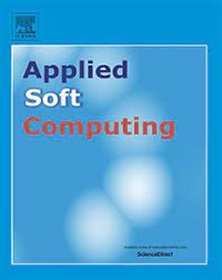Software and hardware synergy for accelerated plant disease identification
IF 7.2
1区 计算机科学
Q1 COMPUTER SCIENCE, ARTIFICIAL INTELLIGENCE
引用次数: 0
Abstract
Plant diseases are one of the main causes of reduced crop yields. Therefore, it is necessary to adopt timely and effective identification methods and take corresponding measures. Some physical and biological detection methods have been proposed by researchers, but these methods require specialized techniques and expensive detection costs. Furthermore, the limited number of skilled technicians means that disease identification is not always timely or effective. To achieve real-time identification of plant diseases in remote areas where network and circuit are not well connected, We adopted a hardware and software co-acceleration approach to implement the design. First, we designed a lightweight convolutional neural network (CNN) and trained this network using a knowledge distillation approach. Then, we quantified the model parameters into int8 type using a method of model quantization to further compress the model size. After compression, the model size of the network is 0.035 MB and the recognition accuracy is 94.06% on the test set of the experiment. In order to deploy the proposed network on resource constrained Field-Programmable Gate Array (FPGA) devices, we used time-division multiplexing and feature map segmentation to deploy the network. Finally, our design is implemented on ZYNQ7020 with an inference speed of 35.73ms/frame and a power consumption of 1.97 W. The experimental results show that our design has the advantages of consuming less FPGA resources, low power consumption, high speed and portability. It can be used for disease recognition in multiple plant classes.
求助全文
约1分钟内获得全文
求助全文
来源期刊

Applied Soft Computing
工程技术-计算机:跨学科应用
CiteScore
15.80
自引率
6.90%
发文量
874
审稿时长
10.9 months
期刊介绍:
Applied Soft Computing is an international journal promoting an integrated view of soft computing to solve real life problems.The focus is to publish the highest quality research in application and convergence of the areas of Fuzzy Logic, Neural Networks, Evolutionary Computing, Rough Sets and other similar techniques to address real world complexities.
Applied Soft Computing is a rolling publication: articles are published as soon as the editor-in-chief has accepted them. Therefore, the web site will continuously be updated with new articles and the publication time will be short.
 求助内容:
求助内容: 应助结果提醒方式:
应助结果提醒方式:


